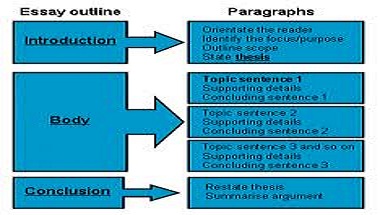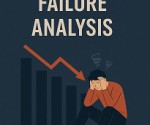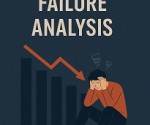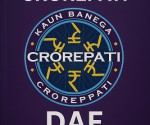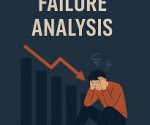ESSAY FOR MAIN EXAM(PUNJAB PCS/HCS/IAS)
EXPECTED ESSAY FOR PUNJAB PCS / HCS / IAS MAIN EXAM 2013
Â
“ Elections, Representation and Democracy in Indiaâ€
INTRODUCTIONÂ :
Our founding fathers had the vision to comprehend that given India’s ethos, diversity and requirements a representative parliamentary democracy was the most suited form of political system. Today, we have emerged as the world’s largest democracy characterized by regular, free and fair elections based on universal adult suffrage to determine the will of the people as to who should be entrusted with the duty of governance.
Â
Main body
The entire exercise of an Indian General Election is mind boggling: in 2009 the electorate numbered more than 714 million; it was catered to by 10 lakh polling booths in which about 50 lakh personnel were deployed. 360 parties put forth candidates. The average voter turn out was 59.7 percent.
As elections are the bedrock of any functioning democracy, a citizen is entitled to assess their efficacy in quantitative and qualitative terms and, for this purpose, examine the mechanism for their conduct and the adequacy of the end product.
The electoral methodology adopted and practiced by us is the single member plurality system, otherwise known as the First-Past-the Post (FPTP) system. The traditional arguments in its favour are that (a) it tends to provide a clear-cut contest between two or more major parties (b) its working is easy for voters to understand (c) it allows individuals who are not members of a political party to run as independents (d) it tends to produce stable governments and (e) it is likely to produce a strong opposition party.
Despite the above, the system is not universal and critics have commented on its limitations. These relate to the (i) disconnect between the vote share and the number of seats won (ii) propensity to over-reward major parties and under-reward smaller parties (iii) likelihood of smaller parties with strong regional base getting a “seat bonus†and winning more seats than their corresponding share of the popular vote.
Experience of six decades propels us to question the certitudes of the First Past the Post system, consider its limitations, and acknowledge that there are a number of areas in the process that need to be looked at for corrective and improvement.
A number of Government committees since 1990 have cogitated on the question of reforms relating to different aspects of the electoral process. These have dealt principally with criminalisation in politics, funding of elections, election campaign procedures and reform of election expenditure laws. Their objective was to improve the efficacy of the system and attend to the lacunae that came to notice. Some of these, like the Law Commission Report of 1999 and the National Commission to Review the Working of the Constitution (2001) also touched upon the question of qualitative improvement in the degree of representative-ness of the elected candidates.
Useful suggestions have also emanated from civil society groups; think-tanks and NGOs have likewise contributed to the discussions.
The most recent effort in this direction is in the shape of the Background Paper on Electoral Reforms initiated in December 2010 by the Ministry of Law and Justice and co-sponsored by the Election Commission of India. It confines itself to “explore options for electoral reforms within the framework of the current system and will not address these larger structural issues.†Pursuant to it, a Core Committee has held regional consultation in seven State capitals; in some of these views on systematic reforms have also been expressed.
My purpose today is to dwell on one aspect of this debate and probe the concept of the representative-ness of the elected representative. The question has a theoretical dimension as well as an empirical one. In terms of existing reality, an elected candidate in our system is one who has secured a plurality, not a majority, of votes cast in his/her electoral constituency. Here some questions arise:
Did the candidate obtain a majority of total votes or a majority of the votes cast? If the latter, would it constitute amajority in terms of the democratic principle of 50+1? If not, and in case the electoral decision reflects the will of a minority of the total electorate, how and to what extent would the candidate be considered representative?
If this pattern is repeated in a good many other constituencies, could a situation arise in which an elected assembly has a majority, or good percentage of the majority party or combination, of members elected on a minority vote in their own constituencies?
Would such a body be considered representative of the electorate as a whole? Would such a situation derogate from the principle of majority rule?
A look at the empirical data provides some justification for raising these questions. In the first general election in 1952, the percentage of successful candidates who secured less than 50 percent of the votes cast was 67.28. This figure went down to 58.09 percent in 1957. In the 13th, 14th, and 15th general elections in 1999, 2004, and 2009 respectively, it was 60.03, 75.87 and 82.68 respectively.
The conclusion is inescapable that a majority of elected members of the Lok Sabha in recent years, and even earlier, won on a minority of votes cast in their constituencies. This is compounded by the absence, in our system, of compulsory voting. Thus if a candidate is elected on 30 percent of the votes cast and if the percentage of polling is the constituency is 60, then the positive mandate secured by the candidate is 30 percent of 60 percent, that is, just 18 percent of the total electorate.
Such an outcome has a distorting impact on the composition of the elected legislature. This is vividly demonstrated by the vote-share seat-won data relating to all the fifteen Lok Sabhas.
The situation is no better, perhaps worse, in State assembly elections with percentage of returned candidates on minority of votes cast going above 70 percent in several cases.
What are the ramifications of such an outcome? Observers have noted that it induces candidates to focus on securing votes of a segment of the electorate and thereby induce, accentuate or reinforce social divisions based on caste, creed, faith or language. For this purpose, and despite formal legal or regulatory constrains, candidates or their supporters do succeed in invoking narrower loyalties to further electoral appeal. The excluded or marginalised social groups “then indulge in strategic voting.†Divisive tendencies and social conflict is necessarily the end product.
The foregoing would suggest a need to revisit the electoral procedures to ensure a greater measure of representative-ness in the elected representatives of the people.  This is essential to achieve in greater measure the purpose of democratic form of governance.
Suggestions have been made with regard to possible correctives to the present system. Principal among these are (a) Mixed Compensatory Proportional Representation on the German model and (b) Second Ballot System to achieve a 50% +1 result. Their merits need to be carefully assessed in terms of our conditions.
The “German model†or the List System requires that the overall representation of parties in legislature be based on the proportion of valid votes (at least 10% of the total) obtained by them. 50% of the legislators will be elected from territorial constituencies based on FPTP system. This will ensure a link between the legislator and the constituents. The balance of 50% will be allocated to parties to make up for their shortfall based on proportion of votes. The party list for the latter will be selected democratically by its members. To operate this system, each voter will be required to cast two votes, one for each category. An essential prerequisite of this system is legal regulation of the internal functioning of political parties. It also requires a more literate electorate.
A diluted version of this model, suitable for “Indian realityâ€, was considered by the 1999 Law Commission Report on Electoral Reforms. It suggested that recognized political parties obtaining at least 5% of the total votes be considered to be eligible for allocation from 25% of the seats earmarked for party lists.
The Second Ballot system involves a run off between the first two contenders in an election if neither of them obtains less than 50% of the votes cast. It retains most of the advantages of the present system but would ensure that parties and candidates seek a wider mandate from the electorate, broaden their vote catchments, and thereby minimise appeal to parochial sentiments which is becoming a source of concern in terms of social cohesion.
The basic premise, and requirement, in a democratic election is to ascertain through the ballot the wish of the majority of voters in the constituency concerned. It cannot therefore be argued that the First-Past-the-Post system now in vogue, whatever may have been the compulsions for adopting it, is theoretically valid or practically the most desirable. As a mature democracy, and one in which correctives in the electoral procedures continues to be work in progress, there is a need to debate the representative-ness of the representative regardless of political convenience or administrative constraints.
This fundamental corrective in the electoral system can and must be added to other electoral reforms proposed by the Election Commission of India and others and are under consideration of the of the Government, as indicated in the reply given by the Government in Parliament recently. There is also a strong case for accelerating the process.
 Seven conditions as essential for the successful functioning of democracy should be
(a) no glaring inequalities in society
(b) a strong opposition
(c) no tyranny of the majority over the minority
(d) equality in law and administration
(e) observance of constitutional morality
(f) functioning of moral order in society
(g) public conscience.
CONCLUSION
Six decades later, we have to concede that the glass of democracy remains half full. We have practiced electoral democracy mechanically without making it fully representative. Our electoral procedures and practices have accentuated rather than diminish social cleavages. We have yet to succeed in eradicating electoral malpractices. We have allowed money power in all its manifestations to distort electoral outcomes. Our political process depicts ideological decadence and a declining observance of constitutional morality. Our society exhibits a disturbing disregard for moral order and public conscience and, in the words of an eminent academic, “the lines between legality and illegality, order and disorder, state and criminality, have come to be increasingly porous.â€
Are we on a slippery slope? There is, clearly an imperative need for rejuvenating our commitment to the values, objectives and the judicious balance of the Constitution.â€
SOME TIPS TO WRITE “BETTER ESSAYâ€
1.Begin the essay writing process by researching your topic, making yourself an expert.
2.Now that you have a good knowledge base, start analyzing the arguments of the essay you’re reading. Clearly define the claims, write out the reasons, the evidence. Look for weaknesses of logic, and also strengths.
3.Ask yourself a dozen questions and answer them. Meditate with a pen in your hand. Take walks and think and think until you come up with original insights to write about.
3.Each individual paragraph should be focused on a single idea that supports your essay’ topic. Begin paragraphs with topic sentences, support assertions with evidence, and expound your ideas in the clearest, most sensible way you can. Speak to your reader as if he or she were sitting in front of you. In other words, instead of writing the essay, try talking the essay.
4.Gracefully exit your essay by making a quick wrap-up sentence, and then end on some memorable thought, perhaps a quotation, or an interesting twist of logic, or some call to action. Is there something you want the reader to walk away and do? Let him or her know exactly what.
5.You’re not done writing your essay until you’ve polished your language by correcting the grammar, making sentences flow, incoporating rhythm, emphasis, adjusting the formality, giving it a level-headed tone, and making other intuitive edits. Proofread until it reads just how you want it to sound.
JOIN OUR ANSWER WRITING EVALUATION PROGRAMME(DISTANCE LEARNING) FOR PUNJAB PCS MAINEXAM/HCS MAIN EXAM/IAS MAIN EXAM 2013












